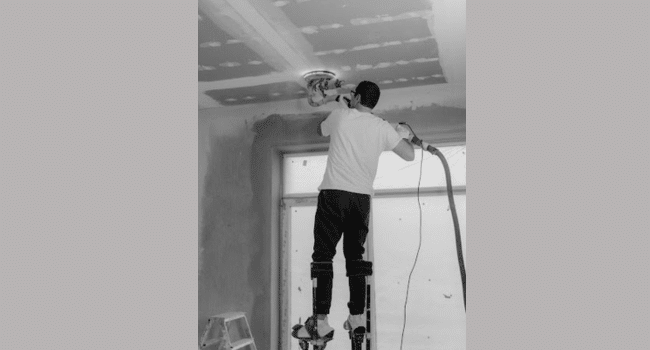Table of Contents
Maintaining the structural soundness and visual appeal of many surfaces, such as patios, driveways, sidewalks, and foundations, requires concrete repair. This article will go over all you require to know about fixing concrete, from frequent problems to efficient restoration techniques.
Understanding Common Concrete Issues
Before beginning concrete repair processes, it is crucial to understand the common issues that might arise with concrete surfaces. Uneven surfaces, foundation settling, scaling, cracking, and spalling are a few of these issues. Deciding on the exact problem is the first step in selecting the best repair plan. By taking preventative measures before the issues develop, early discovery of these issues enables homeowners to save time and money on future repairs ultimately.
To effectively address these concerns, it’s important to recognize the signs of concrete damage early on. These signs can include surface discoloration, crumbling edges, exposed aggregate, or moisture intrusion. Identifying such indicators helps in diagnosing the root cause of the problem, whether it’s due to weather exposure, poor installation, or structural stress. Being proactive about these signs ensures that minor issues don’t evolve into major, more costly repairs.
DIY Concrete Repair Techniques
Do-it-yourself (DIY) methods can be practical and economical for small-scale cement repairs, such as filling up small cracks or surface flaws. For small-scale concrete damage, home improvement stores have concrete patching compounds, crack fillers, and DIY repair kits that may be utilized for basic repairs. When undertaking do-it-yourself repairs, it’s crucial to follow the right instructions and take all the safety precautions. By utilizing appropriate instruments and methods, homeowners may effectively manage minor concrete restoration tasks alone, augmenting the durability and visual appeal of their concrete surfaces.
Professional Concrete Repair Services
Hiring a qualified concrete repair company may be required for more serious damage to concrete or structural problems. Professional contractors are equipped with the knowledge, tools, and resources to correctly determine the amount of damage and suggest suitable repair options. They can also guarantee that repairs are carried out securely and properly, reducing the possibility of further problems. Homeowners may rest easy knowing that their cement surfaces are in good hands when they trust skilled specialists with concrete repairs.
Concrete resurfacing is one of the most effective methods to restore the appearance and functionality of aging or damaged surfaces. This process not only revitalizes the surface but also provides a cost-effective alternative to complete replacement. By addressing these issues promptly and professionally, homeowners can maintain the longevity and aesthetic of their concrete areas with ease.
Polyjacking or Mudjacking? Choosing the Right Method
Polyjacking and mudjacking are two common methods used to rectify uneven concrete surfaces. To raise and level the concrete slab, a specific polyurethane foam is injected beneath it in a process called polyjacking, often referred to as polyurethane concrete lifting. Mudjacking, on the other hand, is raising the slab by pumping a slurry combination of water, sand, dirt, and cement below it. Both techniques are capable of lifting concrete, but polyjacking usually has more benefits, including shorter curing periods, less disturbance, and more durable outcomes. Homeowners should carefully consider mudjacking vs polyjacking before selecting the approach that best fits their requirements and budget.
Polyjacking concrete leveling and lifting is especially favored for projects where precision, speed, and minimal disruption are crucial, making it a preferred choice for many residential and commercial applications. When deciding between polyjacking and mudjacking, it’s important to consider the specific needs of the project, as each method has its own set of advantages depending on the circumstances.
Importance of Timely Concrete Repairs
It is important to take immediate action to address tangible difficulties to keep them from getting worse and leading to more serious issues later on. Postponing repairs might result in more harm, weakened structural integrity, and higher repair expenses. You can increase the longevity of your concrete surfaces and save money on future expensive repairs by taking care of concrete problems as soon as they appear. Homeowners who do routine maintenance and inspections may see any problems early on and undertake proactive steps to resolve them before they get worse.
Hiring the Right Concrete Repair Contractor
Selecting a trustworthy expert with the ability to provide high-quality work is crucial when selecting a concrete repair contractor. To be sure you’re picking a trustworthy contractor, take the time to investigate local companies, read reviews, and get references. Before making a choice, get many quotations and evaluate the services, costs, and warranties. Your choice of contractor may greatly impact your concrete repair project’s success.
Conclusion
Keeping the integrity and usefulness of different surfaces requires an awareness of the specifics of concrete restoration. Understanding your alternatives and selecting the best restoration technique may significantly impact the outcome, regardless of the severity of the fractures. Options ranging from do-it-yourself methods to expert services like mudjacking and polyjacking are available to suit every requirement and price range.
Read More on KulFiy
Know the Difference between Structural and Non-structural Wall Cracks
Best Floor Finishes for High-Traffic Areas
